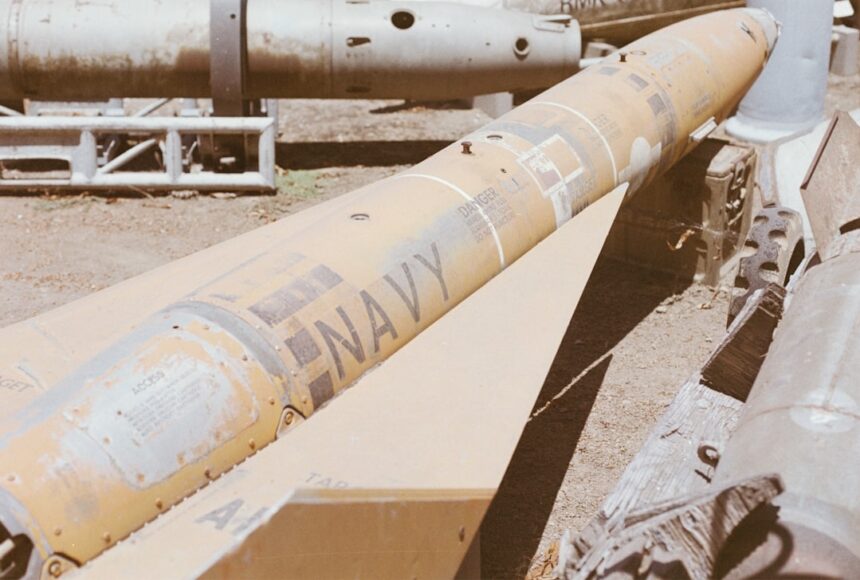The origins of intercontinental missiles can be traced back to the early 20th century, a time when the world was witnessing rapid advancements in technology and warfare. The concept of using rockets for military purposes began to gain traction during World War II, particularly with the development of the V-2 rocket by Nazi Germany. This pioneering work laid the groundwork for future missile technology, demonstrating that rockets could be used not only for short-range attacks but also for long-distance strikes.
The V-2, which was capable of reaching altitudes of over 100 kilometers and traveling at speeds exceeding 5,700 kilometers per hour, showcased the potential of rocketry in warfare. As the war came to a close, the United States and the Soviet Union emerged as superpowers, each eager to harness the technological advancements made during the conflict. The Cold War that followed spurred an intense competition between these two nations, leading to significant investments in missile technology.
The desire for strategic superiority drove both countries to explore the possibilities of intercontinental ballistic missiles (ICBMs), which could deliver nuclear warheads across vast distances.
Key Takeaways
- Intercontinental missiles originated from the development of long-range ballistic missiles during World War II.
- The race for intercontinental missile technology was driven by the Cold War competition between the United States and the Soviet Union.
- The first intercontinental missile, the R-7 Semyorka, was developed by the Soviet Union in 1957.
- Intercontinental missiles played a crucial role in the Cold War, as they could deliver nuclear warheads across continents, leading to a tense arms race.
- The first intercontinental missile launch had a significant impact on global politics, marking a shift in the balance of power and raising concerns about national security.
The Race for Intercontinental Missile Technology
The post-World War II landscape was characterized by a fierce arms race between the United States and the Soviet Union, with intercontinental missile technology at the forefront of this competition. Both nations recognized that possessing advanced missile capabilities would not only enhance their military strength but also serve as a deterrent against potential adversaries. This realization led to a flurry of research and development efforts aimed at creating more sophisticated and reliable ICBMs.
In the United States, the development of intercontinental missiles was spearheaded by organizations such as the Army Ballistic Missile Agency and later NASThe U.S. focused on creating missiles that could deliver nuclear payloads with precision and speed. Meanwhile, the Soviet Union was equally committed to advancing its missile technology, resulting in a series of successful tests that showcased their growing capabilities.
The competition between these two superpowers fueled innovation, leading to breakthroughs in propulsion systems, guidance technology, and warhead design.
The Development of the First Intercontinental Missile

The development of the first intercontinental missile was a monumental achievement that required years of research, testing, and collaboration among scientists and engineers. In the United States, the Atlas missile program marked a significant milestone in this endeavor. Initiated in the late 1950s, the Atlas was designed to be a long-range ballistic missile capable of delivering nuclear warheads to targets over 5,500 kilometers away.
Simultaneously, the Soviet Union was making strides in its own missile programs. The R-7 Semyorka, developed by Sergei Korolev and his team, became the world’s first intercontinental ballistic missile when it was successfully tested in 1957.
This missile not only demonstrated the Soviet Union’s capabilities but also served as a catalyst for further advancements in missile technology. The successful development of these early ICBMs marked a turning point in military strategy, as nations began to recognize the strategic implications of having long-range strike capabilities.
The Role of Intercontinental Missiles in the Cold War
| Country | Intercontinental Missiles | Range (km) | Warheads |
|---|---|---|---|
| United States | Minuteman | 13,000 | 1,200 |
| Soviet Union | R-36 | 16,000 | 10 |
| China | Dongfeng-5 | 13,000 | 3 |
Intercontinental missiles played a pivotal role in shaping military strategies during the Cold War. As tensions escalated between the United States and the Soviet Union, both nations relied heavily on their ICBM arsenals as a means of deterrence. The doctrine of mutually assured destruction (MAD) emerged during this period, positing that both superpowers possessed enough nuclear weapons to ensure total annihilation in the event of a conflict.
This precarious balance created a tense standoff, where each side sought to maintain a credible threat while avoiding direct confrontation. The presence of intercontinental missiles also influenced diplomatic relations between nations. Arms control negotiations became essential as both superpowers sought to limit the proliferation of nuclear weapons and reduce the risk of accidental launches.
Treaties such as the Strategic Arms Limitation Talks (SALT) and later agreements aimed at curbing missile development reflected an understanding that unchecked advancements in ICBM technology could lead to catastrophic consequences. Thus, intercontinental missiles not only shaped military strategies but also played a significant role in diplomatic efforts during this tumultuous period.
The Impact of the First Intercontinental Missile on Global Politics
The successful launch of the first intercontinental missile had profound implications for global politics. It signaled a shift in power dynamics, as nations recognized that possessing ICBM capabilities could alter their standing on the world stage. The Soviet Union’s successful test of the R-7 Semyorka in 1957 sent shockwaves through Western capitals, prompting fears that they had fallen behind in missile technology.
This event catalyzed a reevaluation of defense strategies and led to increased military spending in both superpowers. Moreover, the advent of intercontinental missiles contributed to a new era of geopolitical maneuvering. Countries sought alliances and partnerships based on their missile capabilities, leading to shifts in international relations.
Nations with advanced ICBM technology gained leverage in negotiations and were often viewed as key players in global security discussions. The proliferation of missile technology also raised concerns about regional conflicts, as countries sought to develop their own capabilities in response to perceived threats from neighboring states.
The Evolution of Intercontinental Missile Technology

As technology advanced, so too did intercontinental missile systems. The evolution of ICBM technology saw significant improvements in range, accuracy, and payload capacity. By the 1960s and 1970s, both the United States and the Soviet Union had developed multiple generations of missiles that incorporated cutting-edge technologies such as inertial guidance systems and multiple independently targetable reentry vehicles (MIRVs).
These advancements allowed for greater flexibility in targeting and increased deterrence capabilities. The introduction of solid-fueled missiles further revolutionized ICBM technology. Unlike their liquid-fueled predecessors, solid-fueled missiles could be launched more quickly and required less maintenance.
This shift not only enhanced operational readiness but also made it more challenging for adversaries to detect and intercept launches. As nations continued to invest in research and development, intercontinental missiles became more sophisticated, incorporating advanced materials and electronics that improved their performance and reliability.
The First Intercontinental Missile Test
The first successful test of an intercontinental missile marked a watershed moment in military history. On August 21, 1957, the Soviet Union launched the R-7 Semyorka from its launch site at Baikonur Cosmodrome, achieving a range that demonstrated its capability to reach targets across continents. This test not only validated years of research and development but also sent a clear message to the world about Soviet technological prowess.
In response to this groundbreaking achievement, the United States accelerated its own missile programs. The successful test of an ICBM had far-reaching implications for national security strategies on both sides of the Iron Curtain. It underscored the urgency for nations to develop their own long-range strike capabilities or risk falling behind in an increasingly competitive global landscape.
The Significance of the First Intercontinental Missile Launch
The significance of the first intercontinental missile launch extended beyond mere technological achievement; it fundamentally altered perceptions of military power and security dynamics worldwide. The R-7 Semyorka’s successful flight demonstrated that long-range nuclear strikes were no longer theoretical but a tangible reality. This realization prompted nations around the globe to reassess their defense postures and consider how they would respond to potential threats from adversaries armed with ICBMs.
Furthermore, this launch catalyzed public discourse about nuclear weapons and their implications for global security. Citizens became increasingly aware of the existential risks posed by nuclear arsenals, leading to movements advocating for disarmament and arms control. The launch served as a stark reminder that technological advancements could have dire consequences if left unchecked, prompting calls for international cooperation to prevent nuclear proliferation.
The First Intercontinental Missile’s Impact on National Security
The introduction of intercontinental missiles had profound implications for national security strategies across the globe. For both superpowers, possessing ICBM capabilities became synonymous with deterrence; nations believed that having such weapons would prevent adversaries from launching attacks due to fear of retaliation. This shift led to an arms buildup as countries sought to enhance their missile arsenals and ensure they maintained a credible deterrent.
Moreover, the presence of intercontinental missiles necessitated changes in military doctrine and strategy. Nations began investing heavily in early warning systems and missile defense technologies to counter potential threats from adversaries’ ICBMs. The focus on developing robust national security frameworks reflected an understanding that intercontinental missiles had fundamentally changed the nature of warfare; conflicts could now escalate rapidly with devastating consequences if deterrence failed.
The Legacy of the First Intercontinental Missile
The legacy of the first intercontinental missile is one marked by both technological achievement and geopolitical ramifications. The R-7 Semyorka not only set a precedent for future missile development but also established a framework for understanding deterrence in modern warfare. Its successful launch underscored the importance of long-range strike capabilities in national defense strategies and influenced military planning for decades to come.
Additionally, this legacy extends beyond military applications; it has shaped international relations and diplomacy as well. The existence of intercontinental missiles has prompted ongoing discussions about arms control agreements aimed at preventing nuclear proliferation and reducing tensions between nations. As countries continue to grapple with the implications of advanced missile technology, they must navigate complex geopolitical landscapes shaped by historical precedents set by early ICBMs.
The Future of Intercontinental Missile Technology
Looking ahead, the future of intercontinental missile technology is poised for further evolution as nations continue to invest in research and development initiatives aimed at enhancing their capabilities. Emerging technologies such as hypersonic glide vehicles and advanced propulsion systems promise to revolutionize ICBM design and performance once again. These innovations could lead to faster flight times, improved accuracy, and greater evasion capabilities against missile defense systems.
Moreover, as geopolitical tensions persist around the world, nations may increasingly turn to intercontinental missiles as key components of their national security strategies. This trend raises important questions about arms control efforts and international cooperation aimed at preventing escalation into conflict. As history has shown, advancements in missile technology can have far-reaching consequences; thus, it is imperative for policymakers to engage in dialogue that addresses both security concerns and ethical considerations surrounding nuclear weapons.
In conclusion, intercontinental missiles have played a transformative role in shaping military strategy, global politics, and national security since their inception. From their origins during World War II to their evolution into sophisticated weapons systems today, these missiles have fundamentally altered how nations perceive power dynamics on the world stage. As technology continues to advance, it is crucial for leaders to navigate this complex landscape with foresight and responsibility.
The history of the first intercontinental missile is a fascinating journey into the advancements of military technology during the Cold War era. The development of these missiles marked a significant shift in global military strategy, as they allowed for the delivery of nuclear warheads across continents, thereby altering the balance of power. For a deeper understanding of this pivotal moment in history, you can explore a related article that delves into the intricacies of missile technology and its impact on international relations. Check out this insightful piece on the topic by visiting In The War Room.
WATCH THIS! 🪖How Stolen Nazis Built Cold War Power
FAQs
What is the first intercontinental missile?
The first intercontinental missile was the R-7 Semyorka, a Soviet intercontinental ballistic missile (ICBM) developed during the Cold War.
When was the R-7 Semyorka developed?
The R-7 Semyorka was developed in the late 1950s and was first tested in 1957.
What was the significance of the R-7 Semyorka?
The R-7 Semyorka was the world’s first intercontinental ballistic missile and played a significant role in the space race between the United States and the Soviet Union.
How did the R-7 Semyorka contribute to space exploration?
The R-7 Semyorka was used to launch the first artificial satellite, Sputnik 1, into space in 1957, marking the beginning of the space age.
What impact did the R-7 Semyorka have on the Cold War?
The development and deployment of the R-7 Semyorka heightened tensions between the United States and the Soviet Union, leading to an arms race and increased competition in space exploration.
Was the R-7 Semyorka still in use?
The R-7 Semyorka and its variants were used for several decades and were eventually replaced by more advanced ICBMs. However, some variants of the R-7 Semyorka are still in use for space launches.




